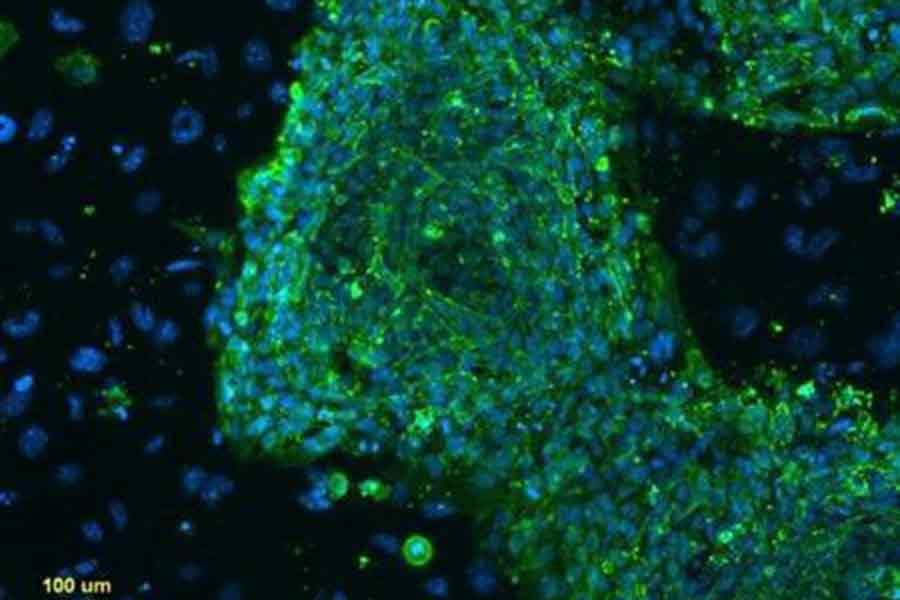A team of doctors from Bangabandhu Sheikh Mujib Medical University has launched clinical trials of stem cell therapy for ovarian regeneration and oocyte generation, offering hope to women with infertility symptoms.
The doctors are carrying out the trials aiming to treat women who are unable to give birth due to reduced ova, reports bdnews24.com.
The trials began with three women - aged 34 years, 36 years and 25 years - on Oct 31 by implanting in their ovaries stem cells collected from their blood.
“One of them suffered a pause in her period and the others had irregular ones. The absence of ovaries prevented them from having babies,” said Jesmin Banu, head of BSMMU’s reproductive endocrinology and infertility department who is leading the trials.
The human body is made up of trillions of cells, each of them containing pairs of chromosomes - the building blocks of genes.
Each cell normally has 23 pairs of chromosomes split into equal numbers of sperm and ovum that can join together to create a singular cell, which is called a stem cell and is key to a body forming in the womb of a woman.
Treatments using stem cells are popular in many countries around the world, including China, Japan and the United States, said Anwarul Azim Akhand, a professor at Dhaka University’s biotechnology department.
“Stem cell treatments in Bangladesh can open up a new avenue. The therapy can treat many complicated diseases.”
HOW THE THERAPY WORKS
The stem cells were separated from the women’s blood and then placed in their ovaries. The doctors are awaiting results on whether the process forms a new ovum.
“If new ova form and everything is normal, we will implant embryos in the mothers’ uterus using test-tubes, which is called IVF [in vitro fertilisation],” Dr Jesmin said.
“Normal pregnancy might occur after the therapy. But for some, that might not happen. For them, we will resort to the test-tube method.”
Those who produce no ovum cannot resort to the IVF method without the therapy. These women require ovary donations. The therapy is an alternative to that procedure, according to Dr Jesmin.
“Religion does not allow a woman to become a mother by giving birth to another woman’s ovum. The aim of stem cell therapy is helping a woman become a mother on her own.”
Dr Jesmin believes stem cell therapy will put an end to social debates related to adopting children or using another person’s ovum to bear one.
The trials will be carried out on six other women and a decision on regularising the treatment will be taken after evaluating the results.
INFERTILITY
There is no data on how many women in Bangladesh are suffering from it.
Globally, around 15 per cent of the couples of reproductive age are in the bracket, while more than 10 per cent of women have failed to conceive.
Data from the World Health Organization or WHO says 48 million couples and 186 million people are childless due to infertility worldwide.
Along with issues with either the man or the woman, or both, WHO holds “inexplicable” reasons responsible for infertility.
Infertility also stems from smoking, excessive drinking, obesity and other reasons involving environmental pollution and hazardous lifestyle.
Fibroids, polycystic ovarian syndrome, ovarian and uterine problems, including ovarian and uterine problems, can make pregnancy impossible for women, said Halima Akter Happy, a gynaecologist and obstetrician at Dhaka Medical College Hospital.
Plans to conceive at an older age also raise the risks of infertility, Halima said. “The ovaries contain a certain amount of ova, the number and quality of which drops while growing older.”
WHO says a large portion of the world population has had no access to assistance for reproductive technology available in treatment for over three decades.
According to a Swiss study on stem cells published by researchers from the US and India in June, it is possible to cure infertility in 80 per cent of the cases using modern technology. And stem cells therapy gives hope where all other methods have failed.
They emphasise large-scale clinical trials to determine the safety and efficacy of stem cell therapy.


